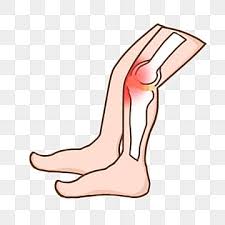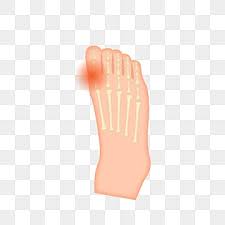Gout is a severe and incapacitating form of arthritis that usually manifests as sudden, intense pain in the joints, commonly the big toe. The condition arises from an accumulation of uric acid crystals in the joints, leading to extreme pain and inflammation.

The Pathology of Gout
Grasping the root causes of gout is crucial for appreciating how homeopathy can be beneficial in its treatment. Gout is the result of either the body’s excessive production of uric acid or its inability to excrete it efficiently. This leads to the formation of sharp uric acid crystals in the joints, triggering severe pain and swelling. Here is a brief overview of the pathology involved in gout:
1. Uric Acid Metabolism: Gout originates from disturbances in uric acid metabolism, which causes an increase in uric acid levels in the blood.
2. Hyperuricemia: Elevated uric acid levels, known as hyperuricemia, are a primary factor in gout’s development.
3. Urate Crystal Formation: High uric acid levels can lead to the formation of needle-like urate crystals within joints and surrounding tissues.
4. Inflammation: These crystals attract immune cells, initiating an inflammatory response that results in joint pain, redness, warmth, and swelling.
5. Acute Gout Attacks: Such inflammatory responses cause sudden, intense pain, characteristic of acute gout attacks.
6. Tophi and Chronic Gout: If left untreated, gout can become chronic, leading to recurrent attacks and the formation of tophi—deposits of urate crystals in and around the joints.
7. Joint Damage: Persistent inflammation and crystal accumulation can eventually cause joint deformities and limit mobility.
Risk factors like diet, genetics, certain medical conditions, and medications can contribute to gout. Managing gout generally involves addressing hyperuricemia, reducing inflammation, and preventing future attacks.
Types of Gout
Gout manifests primarily in two forms:
1. Acute Gout: Characterized by sudden and severe attacks of pain and inflammation, which may last from a few days to several weeks.
2. Chronic Gout: If not treated effectively, gout can progress to a chronic stage, marked by frequent flare-ups and ongoing joint damage.
Stages of Gout
Gout progresses through four stages:
1. Asymptomatic Hyperuricemia: Elevated uric acid levels without any symptoms.
2. Acute Gouty Arthritis: Sudden, painful attacks usually affecting a single joint.
3. Intercritical Gout: A symptom-free period between gout attacks.
4. Chronic Tophaceous Gout: An advanced stage where uric acid crystals accumulate, leading to joint deformities and persistent pain.
Causes of Gout
Gout primarily results from high uric acid levels in the blood. However, certain triggers can provoke gout attacks:
– Diet: Consuming foods high in purines, such as red meat, seafood, and alcohol, can increase uric acid levels.
– Genetics: A family history of gout indicates a genetic predisposition to the condition.
– Medical Conditions: Diseases like diabetes, high blood pressure, and kidney disorders can increase the risk of developing gout.
Risk Factors for Gout
Several factors elevate the likelihood of developing gout:
– Gender: Men are generally more prone to gout, though women’s risk increases post-menopause.
– Age: Gout is more common in middle-aged and older adults.
– Obesity: Excessive body weight can lead to higher uric acid levels.
Recognizing the Symptoms of Gout
Identifying the symptoms of gout is essential for early diagnosis and management:
– Sudden Joint Pain: Severe pain, typically in the big toe, but it can affect other joints as well.
– Swelling and Redness: Inflammation causes the affected joint to swell, become warm, and turn red.
– Limited Mobility: The pain and swelling associated with gout can restrict joint movement.
– Tophi: In severe cases, small, hard lumps of uric acid crystals, called tophi, may form under the skin near affected joints.
Diagnostic Approaches for Gout
Healthcare professionals may perform various tests to confirm a gout diagnosis and determine the best treatment approach:
– Blood Tests: To measure uric acid levels in the blood.
– Joint Aspiration: Extracting synovial fluid from the affected joint to check for uric acid crystals.
– Imaging: X-rays or ultrasounds may be used to detect joint damage or tophi.
General Management of Gout
Gout management involves a combination of dietary changes, medication, and lifestyle adjustments:
– Medication: Doctors may prescribe drugs to manage pain, lower uric acid levels, and reduce inflammation during flare-ups.
– Lifestyle Adjustments: Maintaining a healthy weight, limiting alcohol intake, and avoiding foods high in purines can help prevent gout attacks.
-Hydration: Staying well-hydrated aids the body in eliminating excess uric acid.
Preventing Gout
Preventive measures are crucial for reducing the frequency and severity of gout attacks, thus preserving a high quality of life:
– Dietary Adjustments: Reduce intake of alcohol, seafood, and red meat; increase consumption of fruits, vegetables, and low-fat dairy products.
– Weight Management: Achieving and maintaining a healthy weight can decrease gout risk.
– Medication Adherence: Taking prescribed medications as directed can help prevent future attacks.
Homeopathy’s Role in Gout Management
Homeopathy, a holistic approach to medicine, aims to enhance the body’s natural healing abilities. It considers not only the physical symptoms of a condition but also the patient’s emotional and mental well-being.
Homeopathic Remedies for Gout
1. Benzoic Acid: Used for gout with uric acid diathesis, foul-smelling urine, and painful nodules. Symptoms worsen in open air.
2. Ledum Palustre: Effective for gout with shooting pains, swelling, and paleness in small joints. Symptoms worsen with cold exposure and at night.
3. Colchicum: Indicated for gout affecting the big toe, with sensitivity to touch and movement, and tingling in the fingernails. Symptoms worsen from sundown to sunrise.
4. Urtica Urens: Alleviates gout pain in the deltoid, ankles, and wrists, aggravated by cold, damp air, water, and touch.
5. Bryonia Alba: Recommended for red, swollen joints with stitching and tearing pain. Symptoms worsen with movement, warmth, and eating; improve with rest and cold.
6. Lycopodium Clavatum: Treats chronic gout with chalky deposits in the joints, worsened by movement, warmth, and cold, especially after midnight.
It is crucial to consult a qualified homeopath who can provide a thorough evaluation of your condition and suggest the most suitable remedies for your individual needs.

Conclusion: A Remedy for Your Pain!
Gout is a painful condition that can significantly impact your quality of life. While conventional treatments are effective, homeopathy offers a personalized, holistic approach to managing gout symptoms and preventing recurrence.
By addressing underlying imbalances in the body and promoting overall health, homeopathy can complement your gout management plan. Always seek advice and treatment options tailored to your specific needs and preferences from a healthcare professional.
Reach out to us for a Consultation
For any queries, reach out to us at contact@homeopathic.ai
This blog is for information purposes. It’s crucial to note that while homeopathy is a centuries-old practice with many adherents worldwide, always consult a qualified homeopath or medical professional before initiating any treatment.





